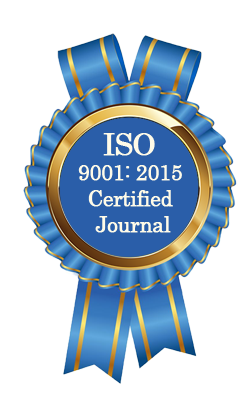| All | Since 2020 | |
| Citation | 105 | 60 |
| h-index | 4 | 4 |
| i10-index | 3 | 2 |
WJAHR Citation 
Login
News & Updation
Best Article Awards
World Journal of Advance Healthcare Research (WJAHR) is giving Best Article Award in every Issue for Best Article and Issue Certificate of Appreciation to the Authors to promote research activity of scholar.
Best Article of current issue
Download Article : Click here
Indexing
Abstract
SYMPTOMATIC VERSUS ASYMPTOMATIC HYPOGLYCEMIA AMONG NEONATES ATTENDING NEONATAL CARE UNIT – COMPARATIVE STUDY CONDUCTED IN MOSUL-IRAQ
*Mohammed Ali Hazim Mohammed Ali, Ziad Khalid Majeed Al Bazzaz and Muthana Ahmed Azeez
ABSTRACT
Background: Hypoglycemia in neonate is a common but preventable metabolic disease that can lead to braindamage, mental retardation, and death. Despite an increase in hospital deliveries and improvements in neonatalcare procedures, there are still disputes on the most effective method of detecting neonatal hypoglycemia, and itstill happens frequently. Objectives: To compare the risk factors for symptomatic and asymptomatichypoglycemia among neonates attending the neonatal intensive care unit. Methods: A comparative study wasconducted, from January 2023 to the end of December 2023. The study was carried out in the Neonatal IntensiveCare Unit at Ibin Al Atheer and Al Salam Teaching Hospitals in Mosul, Iraq. The study included both genderswith blood glucose levels less than 45 mg/dL. Blood glucose levels greater than 45 mg/dL, congenital defects, andproblems with feeding (such as cleft lip and palate) were excluded from the study. The questionnaire includesThree parts; part one for socio-demographic data such as patients’ sex, maternal ages and parity. Part two formaternal obstetric history including gestational diabetes, pregnancy induced hypertension, premature rupture ofmembrane, use of oral hypoglycemic drugs and the presence of maternal metabolic diseases. Part three forneonatal factors such as birth weight, gestational age at birth (<37 weeks considered premature), and mode ofdelivery, furthermore; post-delivery complications such as birth asphyxia, neonatal sepsis, respiratory distresssyndrome, hypothermia, endocrine disorder, inborn error of metabolism and inadequate feeding. Results: Among160 patients enrolled in the study (80 with symptomatic and 80 with asymptomatic hypoglycemic patients), themajority of both groups are males, having mothers of less than 25 years and primigravida, delivered by normalvagina mode of delivery, premature and small for gestational age. It’s evident that gestational diabetes isstatistically significant different for patients with symptomatic hypoglycemia (P value <0.001). Moreover; thepresence of small for gestational age was statistically significant different for patients with asymptomatichypoglycemia (P value <0.049). Similarly; low birth weight was another factor found to be statistically significantfor asymptomatic hypoglycemia (P value <0.041). Furthermore; respiratory distress syndrome was statisticallysignificant for patients with asymptomatic hypoglycemia (P value <0.047). On the other hand; prematurity,appropriate for gestational age, large for gestational age, the presence of birth asphyxia, neonatal sepsis,hypothermia, endocrine disease, in born error of metabolism and inadequate feeding were shown to be statisticallynot significant between the two groups (P value more than 0.05) for all. Conclusion: According to the studyfindings; maternal GDM can cause more symptomatic hypoglycemia, while SGA, LBW, and RDS can causasymptomatic hypoglycemia.
[Full Text Article] [Download Certificate]
